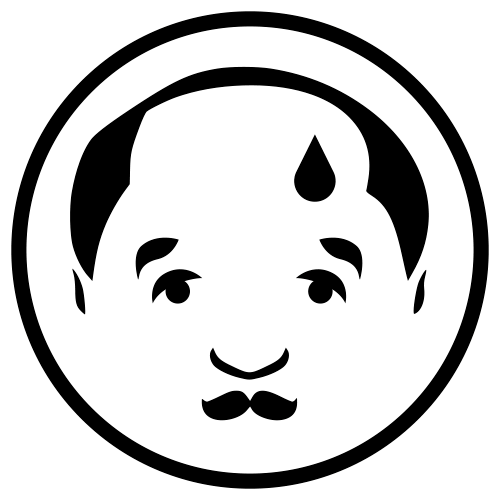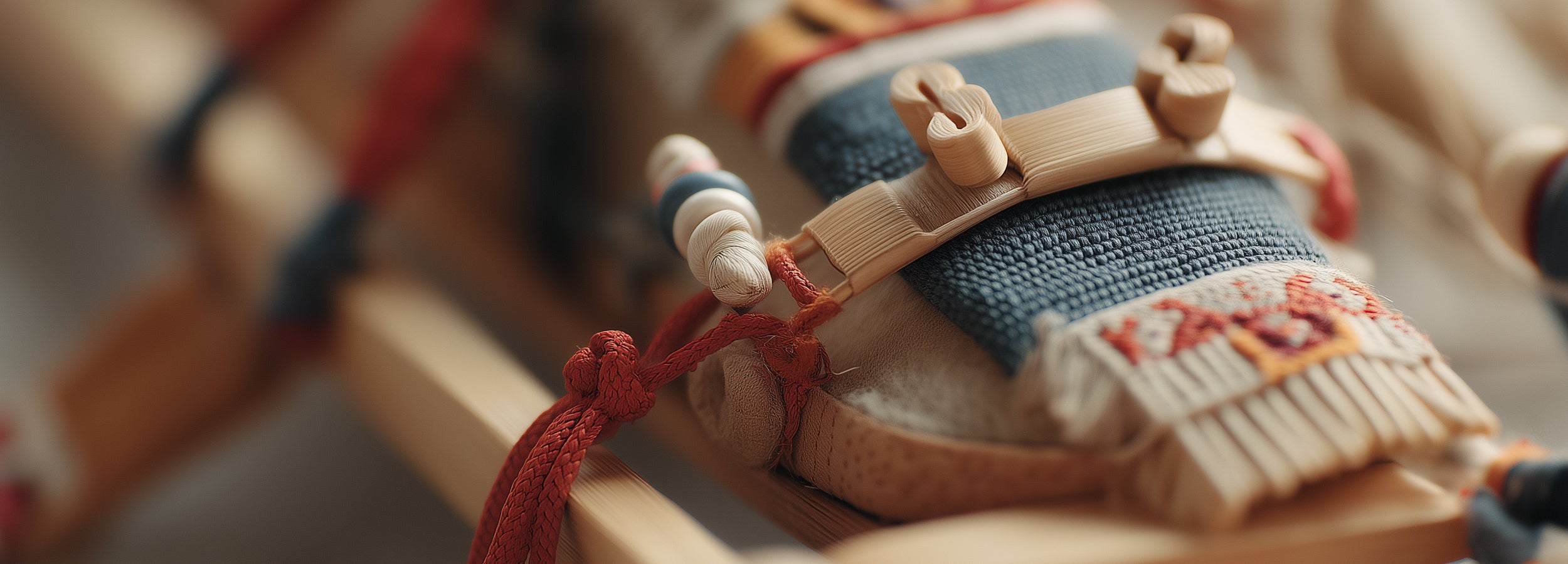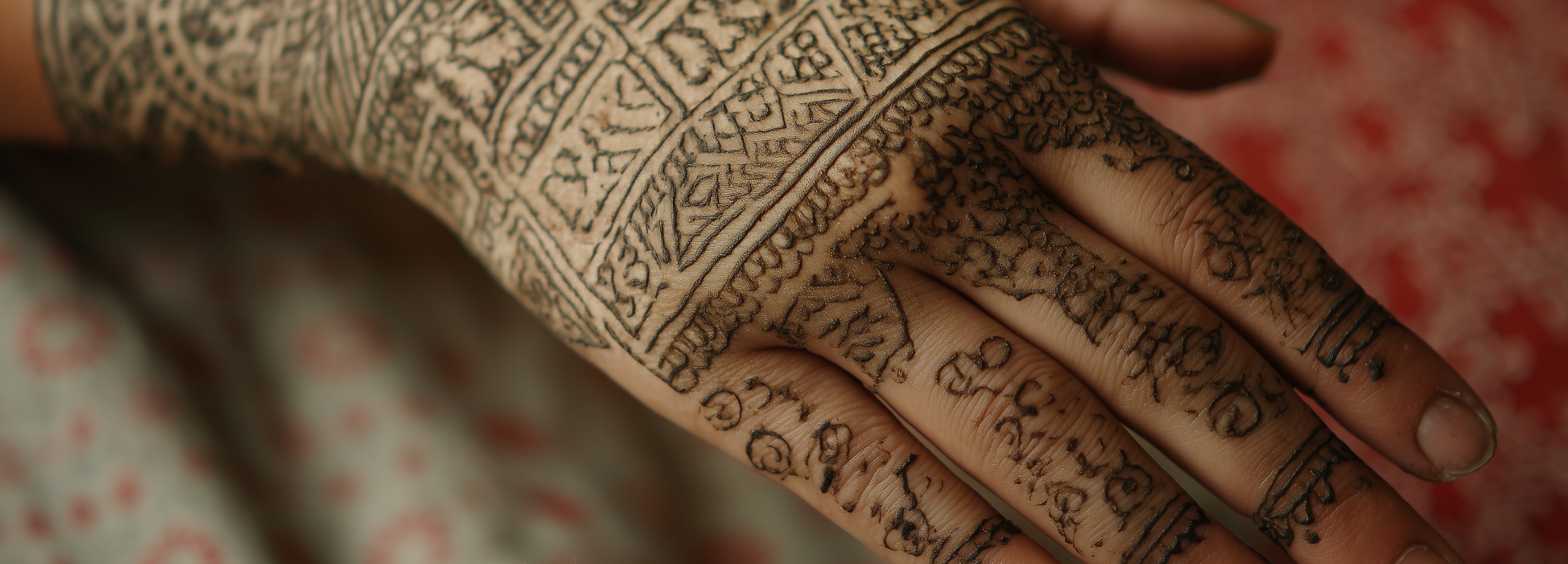Traditional & Indigenous Designs
Patterns Across Cultures
In the world of men’s accessories, patterns aren’t mere surface decoration—they're often deeply rooted in history, geography, and culture. From ancient symbols to modern national icons, patterns tell stories, convey identities, and even carry spiritual meaning. Vincent’s journey into geographically and historically distinctive patterns explores the wonderful world of cultural designs.
FatCloth draws inspiration from the past and current cultures respecting the originators behind the phenomena. Our purpose is not to rip off or copy any indigenous pieces of culture but to build on the legacy and create new versions that honour the continuity of the original designs and designers. If you feel that we have crossed the line with some design, please let us know via our contact form and we will review the case asap.
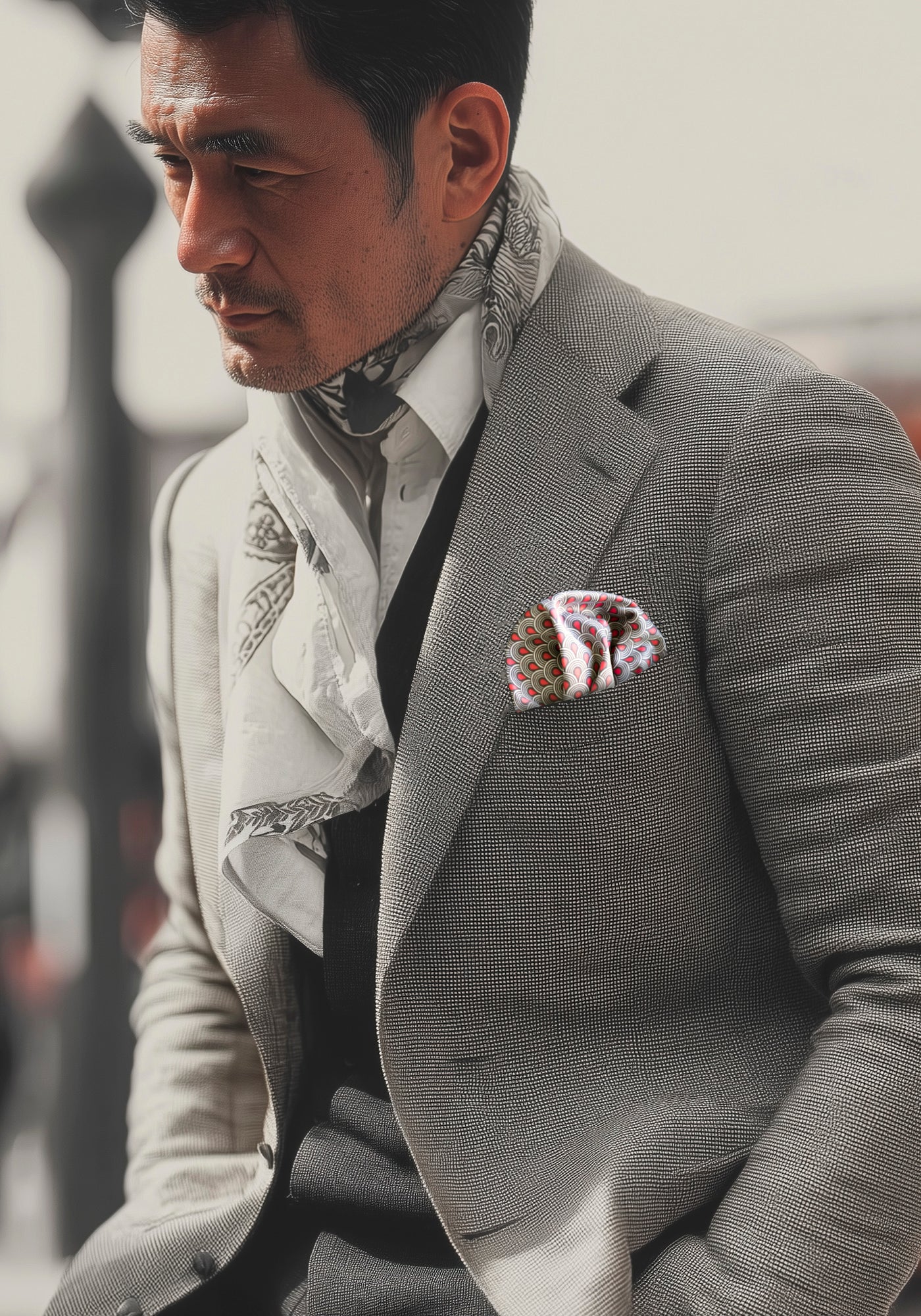
Seigaiha & Asanoha
Japanese pattern classics
Seigaiha ("Blue Ocean Waves"): This iconic Japanese pattern features overlapping circles forming waves, symbolizing peace, resilience, and good fortune. Seigaiha patterns are timeless and bring a calm, harmonious touch to pocket squares, ties, or scarves—perfect for the thoughtful minimalist. Musashi is FatCloth's take on the classic Seigaiha design, one of three color variants, Blood, carried by the gentleman.
Asanoha ("Hemp Leaf"): Made up of symmetrical, interlocking hexagons, the Asanoha pattern represents growth and vitality. Traditionally used in children’s clothing, it’s now a sophisticated motif on modern accessories, giving off a blend of energy and structure. Visit FatCloth Issei if you are a fan of the Asanoha pattern.
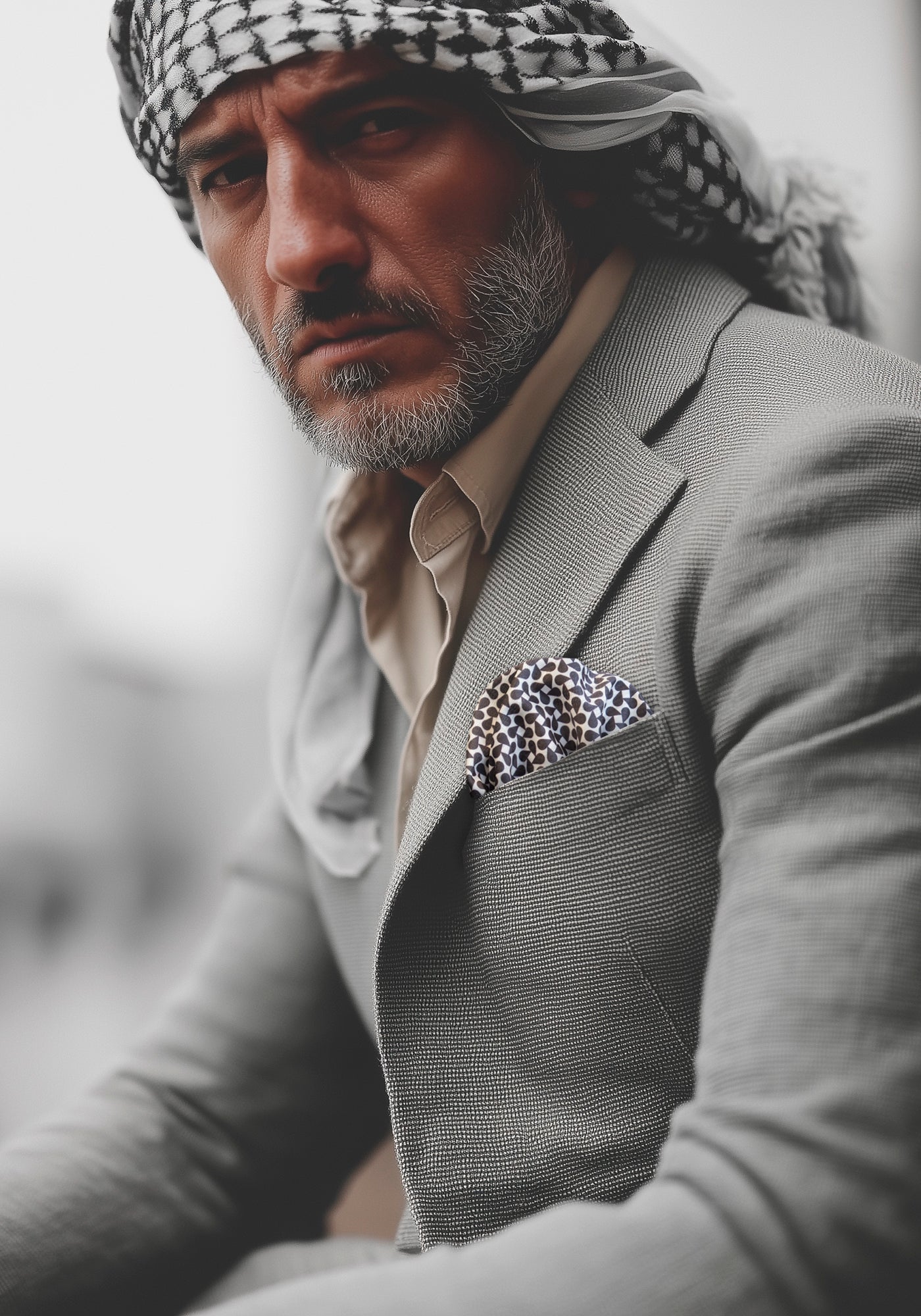
Middle Eastern Heritage
Keffiyeh or Shemagh pattern
The iconic checkered Keffiyeh or “kufiya” pattern is more than fashion—it’s deeply symbolic. Originally worn for protection against sun and sand, the geometric black-and-white or red-and-white pattern also carries cultural and political significance.
Today, Keffiyeh-inspired scarves and fabric patterns are worn globally, bridging function, tradition, and style. The distinctive pattern has become a symbol of left wing politics and support for the oppressed especially on the eastern part of the Mediterranean.
Vincent's take on the ancient Arabic symbolism theme is featured on the simplistic pattern of FatCloth Aziz featured on the picture.
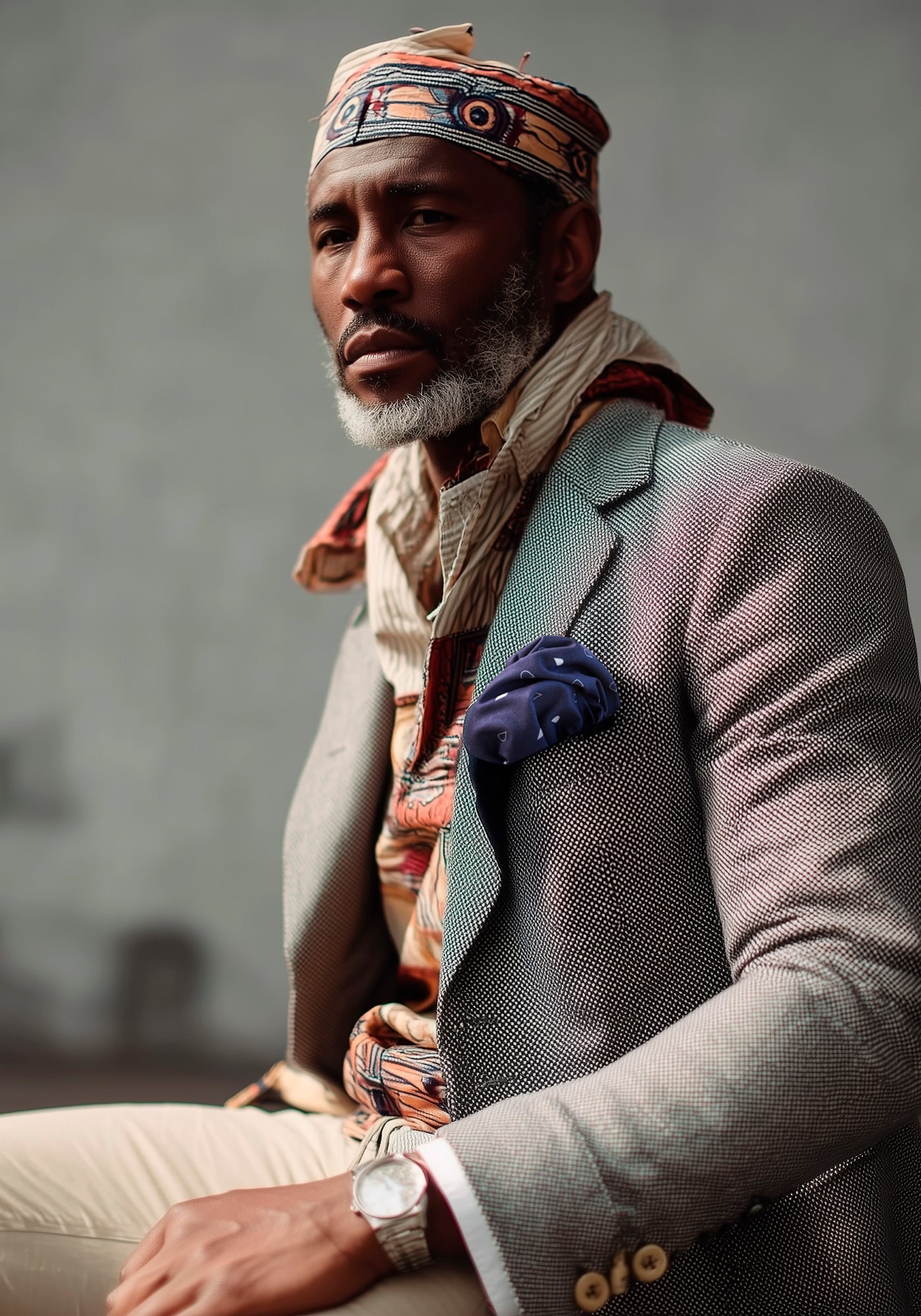
Ankara and Kente
African Prints
Ankara (Dutch Wax Prints): Known for their bold colors and dynamic symmetry, Ankara fabrics are West African staples that make striking statements. On accessories like bow ties, pocket squares, and backpacks, they inject vibrant life and cultural pride.
Kente: Originating from Ghana, this brightly colored, handwoven fabric is traditionally reserved for royalty and special occasions. When used in men’s accessories, Kente represents celebration, status, and deep cultural roots.
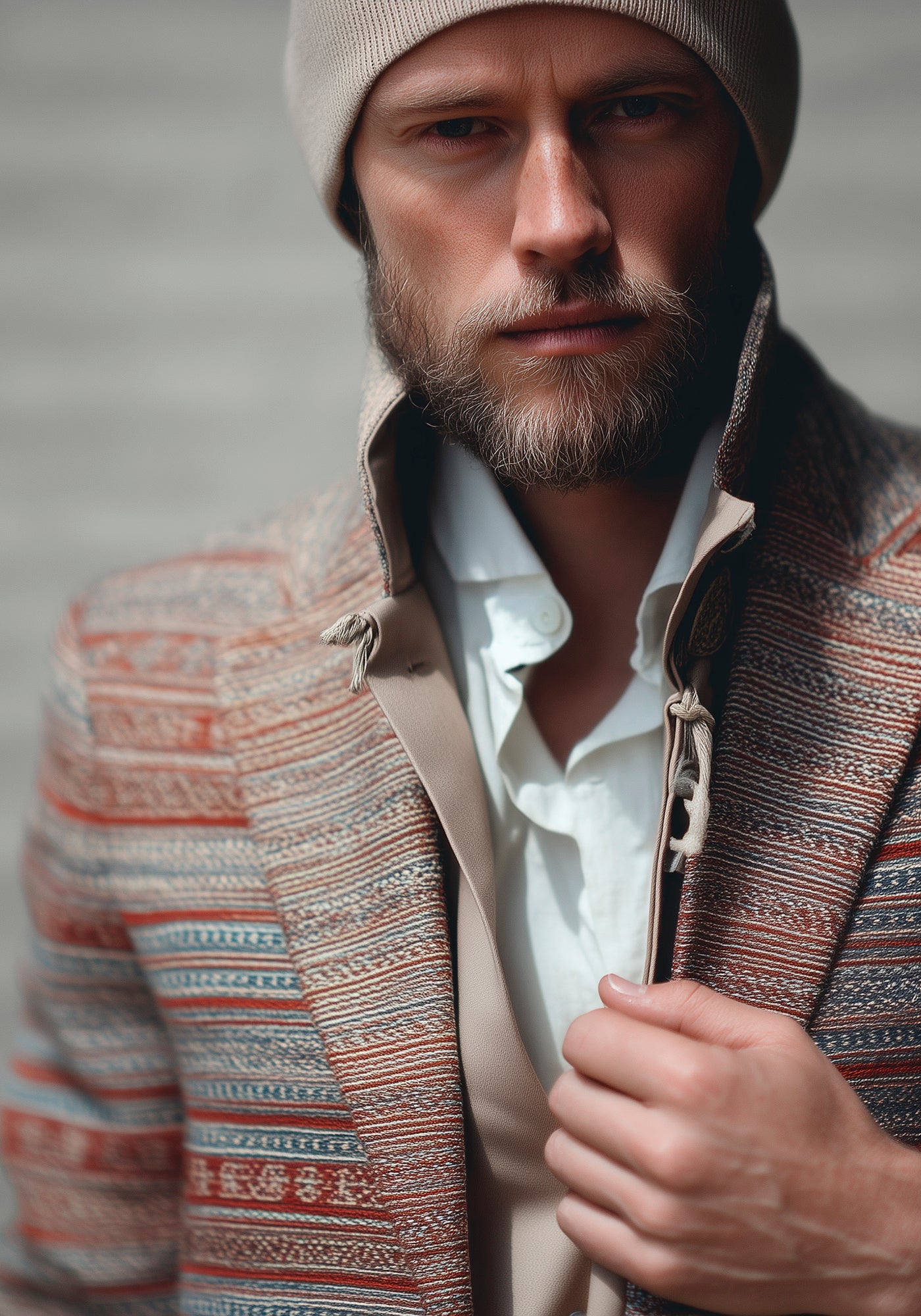
Scandinavian Simplicity
Nordic patterns
Think snowflakes, reindeer, and geometric borders. Inspired by knitwear and folk art, Nordic patterns are rooted in practicality and minimalism. You’ll often see these motifs on winter scarves, beanies, and gloves. They evoke both holiday spirit and a clean, outdoorsy aesthetic.
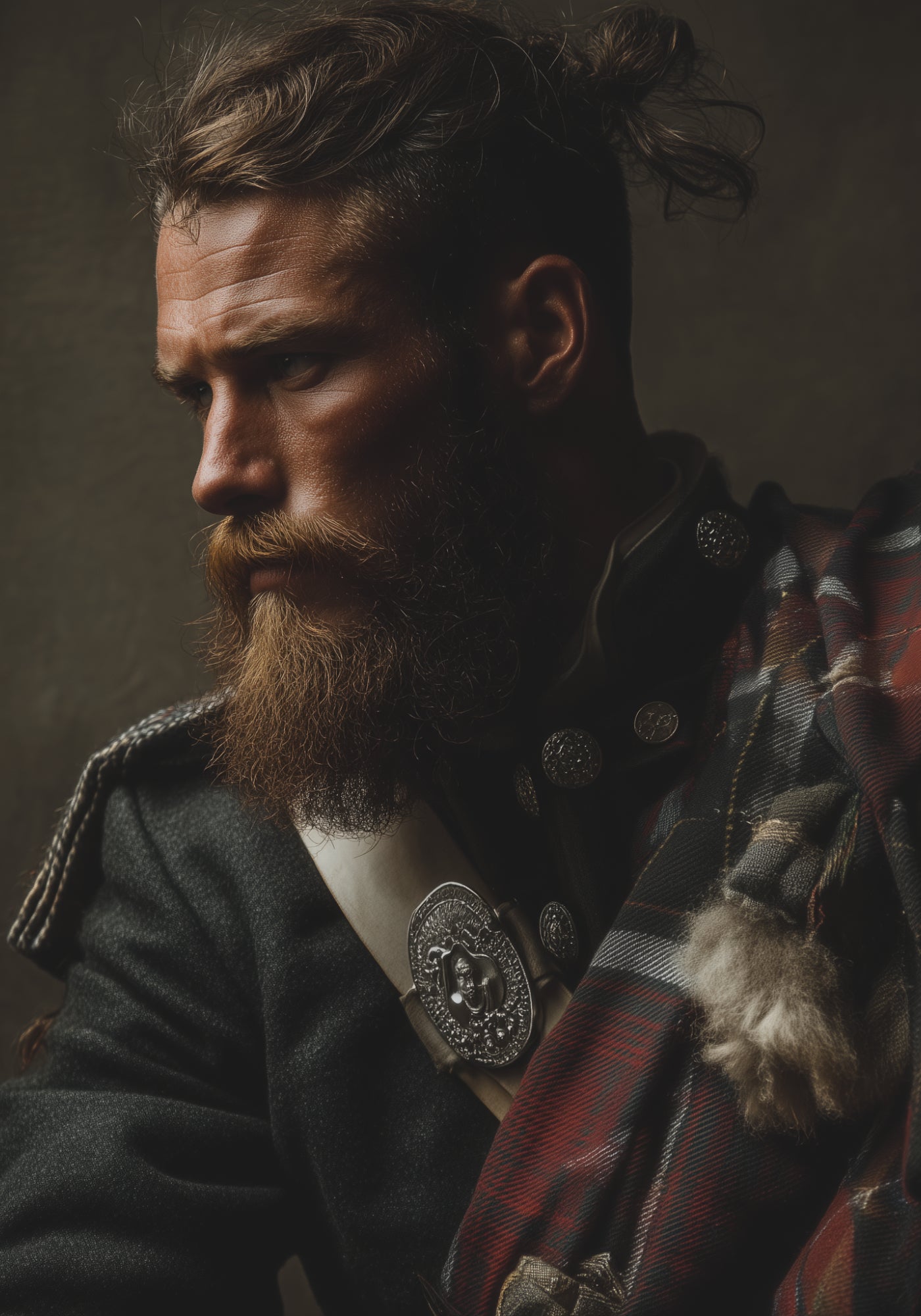
British Heritage
Tartan and Paisley patterns
Tartan: Instantly recognizable, tartan checks originate from Scottish clans and now adorn everything from ties to trench coat linings. Wearing a tartan piece adds a regal or rebellious touch—depending on how you style it. See FatCloth Stig on our modern take on Tartan chequers.
Paisley: Though it has Persian origins, paisley became a symbol of Victorian elegance thanks to British textile mills. The swirling teardrop motif lends vintage charm to ties, ascots, and handkerchiefs. A fine example of a simple Paisley design is FatCloth Ludwig Petrol.
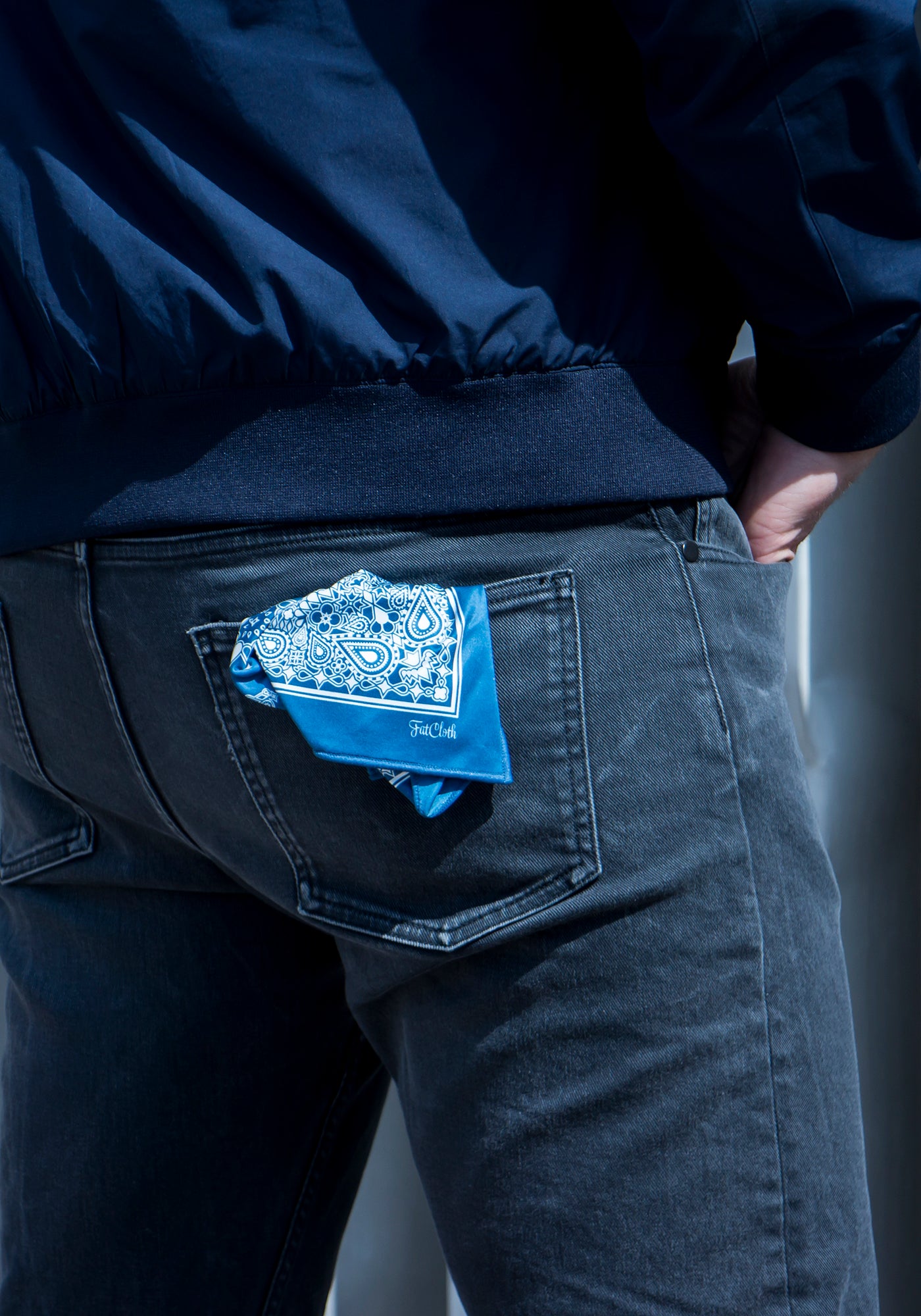
Stars, Stripes, and Bandana Prints
Americana patterns
Patterns like red-white-blue stars and stripes, or the classic paisley-filled bandana, are staples of American heritage. These motifs often appear on rugged casual accessories—bandanas, socks, caps—channeling both patriotism and rebellious spirit.
For a fine example of a modern office day bandana pattern redesigned to fit a multipurpose pocket square by FatCloth go and see Salvatore. There's another one in red too!
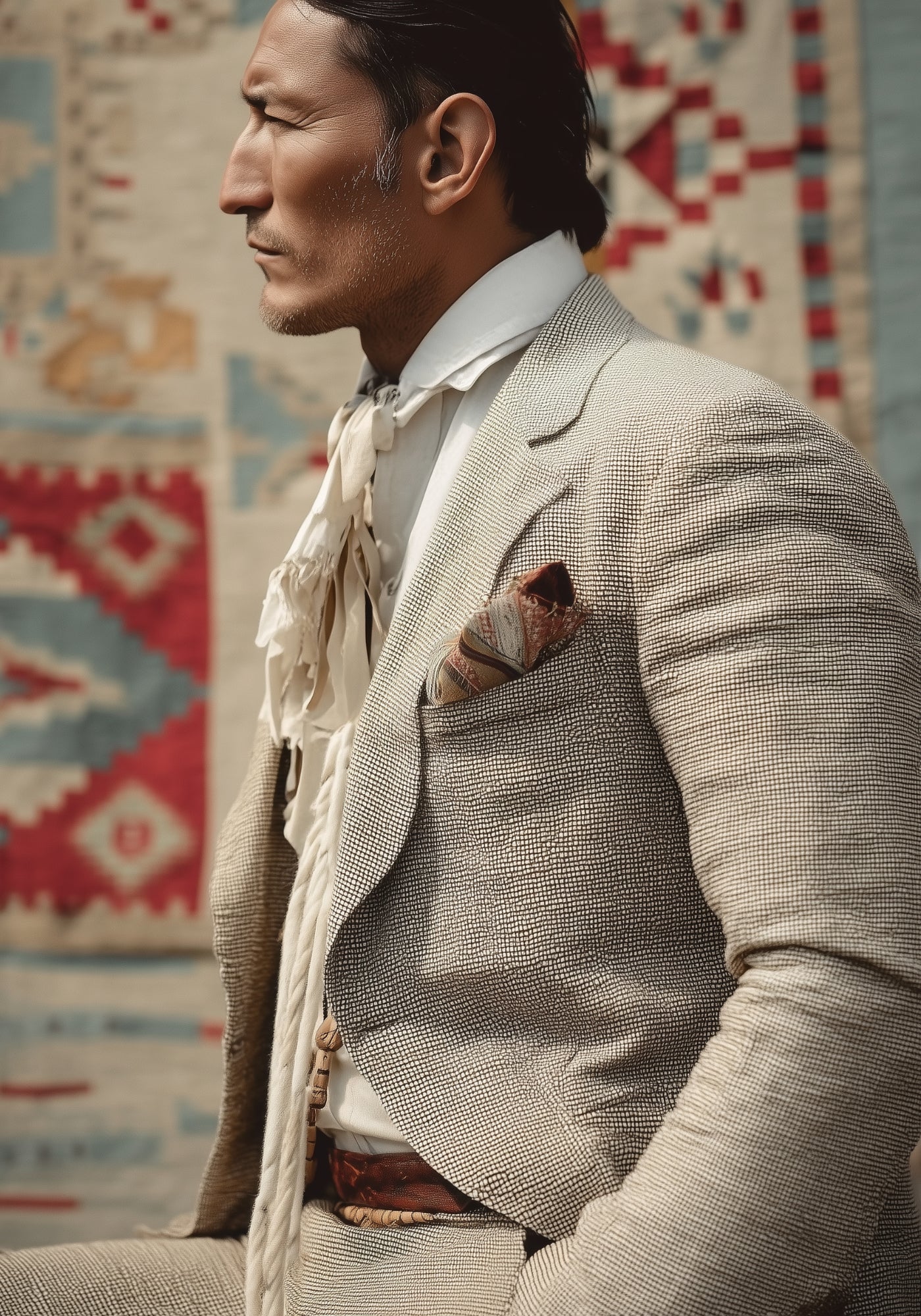
Roots go deep
Indigenous Patterns of the Americas
Native American patterns—such as Navajo geometries—are rich in symbolism and spiritual meaning. Zigzags, diamonds, and arrows often represent elements like rain, mountains, or protection. These patterns lend themselves beautifully to woven belts, bracelets, or wool scarves.
Haida and Tlingit patterns from the Pacific Northwest feature bold, flowing animal motifs—like ravens, bears, and salmon—that reflect deep-rooted spiritual beliefs. On the Plains, tribes such as the Lakota and Cheyenne are known for their detailed beadwork and quillwork, using symbolic geometric patterns on clothing, moccasins, and ceremonial items. Whether carved, beaded, or woven, these patterns serve as visual languages—conveying stories, values, and ancestral knowledge across generations.
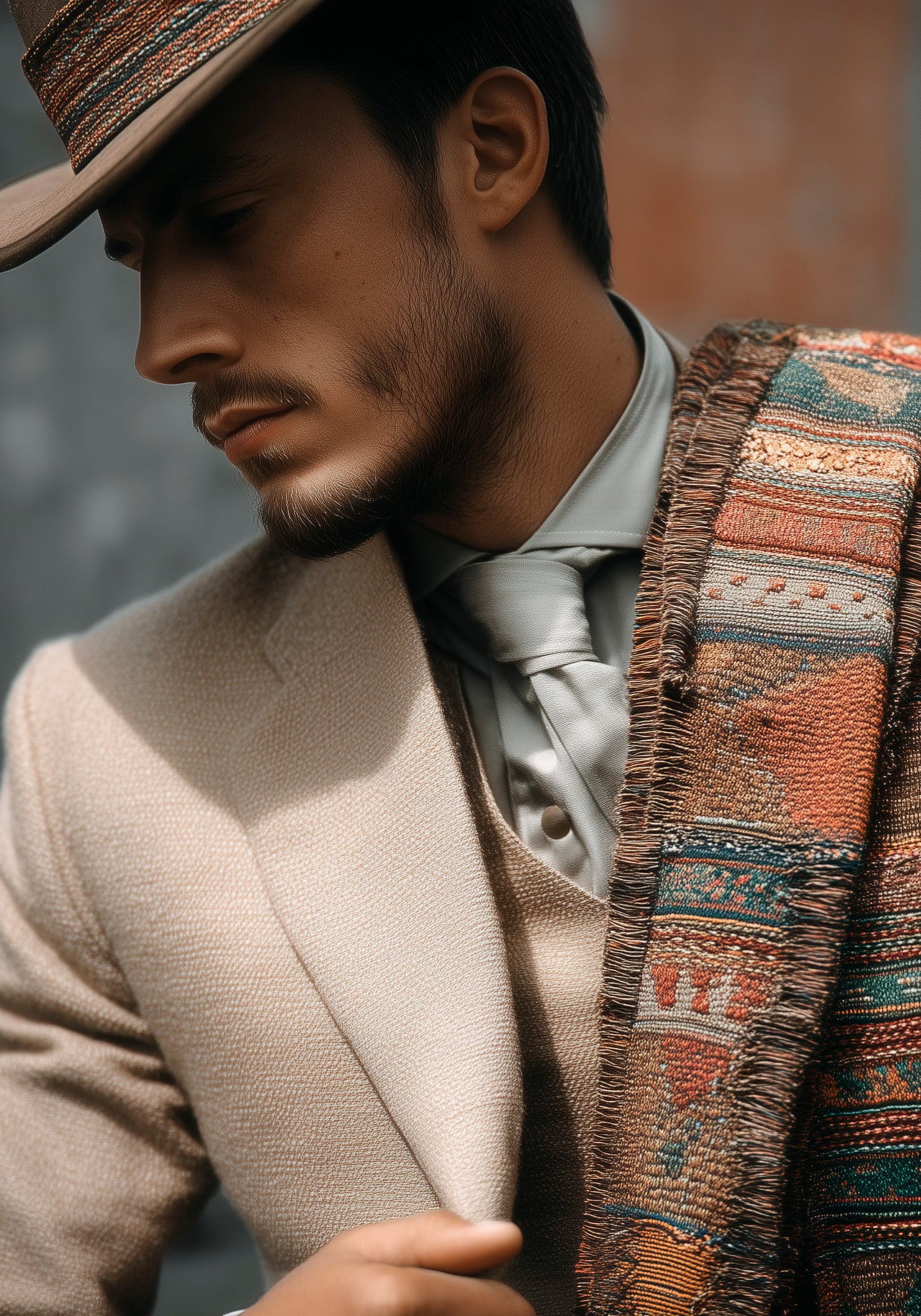
Latin American origins
Otomi and Andean Weaves
Otomi: From central Mexico, Otomi patterns are bold and joyful, featuring animals and flowers in vibrant hues. These motifs feel artisanal and celebratory—excellent for statement-making summer accessories.
Andean Weaves: Featuring stripes, zigzags, and natural dyes, Andean patterns from Peru and Bolivia reflect mountain life and ancient culture. Ideal for woolen accessories and handwoven textures.

Skin is the original canvas
Polynesian Tattoo Motifs
Inspired by traditional tatau (tattoos), Polynesian and Maori motifs are rich in cultural significance. Repeated triangles, spears, and ocean waves tell personal and ancestral stories. As accessory patterns, they add mystique, masculinity, and a powerful visual presence.
Final Thought
Wearing the World
Culturally-rooted patterns are more than aesthetic—they're wearable stories. By incorporating traditional motifs into your accessories, you not only expand your style but also pay tribute to the rich tapestry of global design. Just be mindful: wear with appreciation, not appropriation. Vincent recommends learning the story behind the symbol—because true style is always informed.
For some more interesting patterns with stories visit our FatCloth Originals collection.
